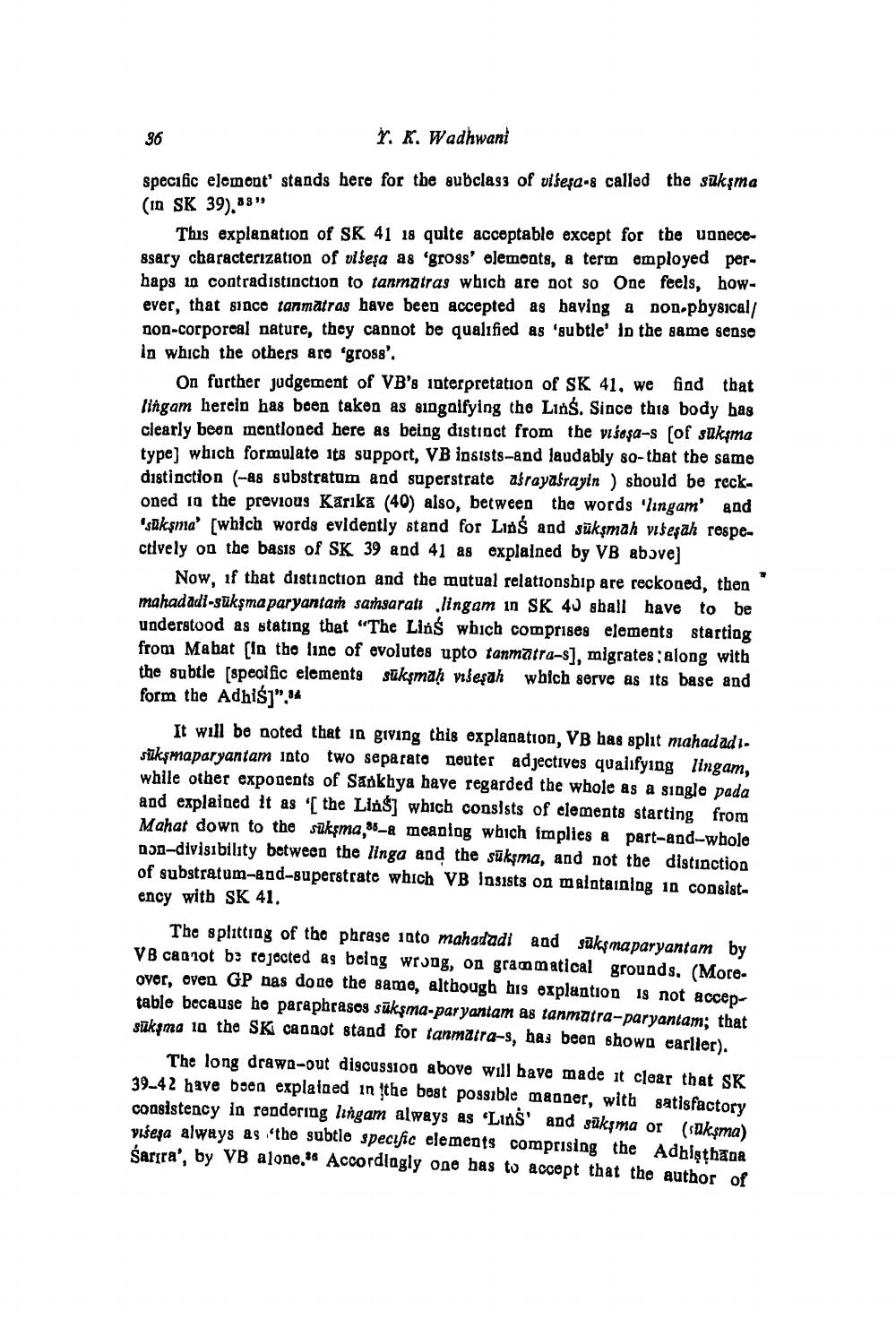________________
Y. K. Wadhwani
specific element' stands here for the subclass of višeşa-s called the sukşma (in SK 39).88"
36
This explanation of SK 41 18 quite acceptable except for the unnecessary characterization of višeşa as 'gross' elements, a term employed perhaps in contradistinction to tanmatras which are not so One feels, however, that since tanmatras have been accepted as having a non-physical/ non-corporeal nature, they cannot be qualified as 'subtle' in the same sense in which the others are 'gross'.
On further judgement of VB's interpretation of SK 41, we find that lingam herein has been taken as singaifying the Lins. Since this body has clearly been mentioned here as being distinct from the visesa-s [of suksma type] which formulate its support, VB insists-and laudably so-that the same distinction (as substratum and superstrate atrayasrayin ) should be reckoned in the previous Karika (40) also, between the words 'lingam' and 'sūksma' [which words evidently stand for Lins and sukṣmah višeşah respectively on the basis of SK 39 and 41 as explained by VB above]
Now, if that distinction and the mutual relationship are reckoned, then mahadadi-sükşma paryantam samsarati lingam in SK 40 shall have to be understood as stating that "The Linś which comprises elements starting from Mahat [In the line of evolutes upto tanmatra-s], migrates; along with the subtle [specific elements sükşmaḥ višeşah which serve as its base and form the Adhis]","
It will be noted that in giving this explanation, VB has split mahadadı. sükşmaparyantam into two separate neuter adjectives qualifying lingam, while other exponents of Sankhya have regarded the whole as a single pada and explained it as '[ the Lins] which consists of elements starting from Mahat down to the suksma 5-a meaning which implies a part-and-whole non-divisibility between the linga and the sukşma, and not the distinction of substratum-and-superstrate which VB insists on maintaining in consistency with SK 41.
The splitting of the phrase into mahadadi and sūksmaparyantam by VB cannot be rejected as being wrong, on grammatical grounds. (Moreover, even GP nas done the same, although his explantion is not acceptable because he paraphrases sukşma-paryantam as tanmatra-paryantam; that sukama ia the SK cannot stand for tanmatra-s, has been shown earlier).
The long drawn-out discussion above will have made it clear that SK 39-42 have been explained in the best possible manner, with satisfactory consistency in rendering lingam always as 'Lins' and sukşma or (sükṣma) višesa always as the subtle specific elements comprising the Adhisthana Sarira', by VB alone. Accordingly one has to accept that the author of




